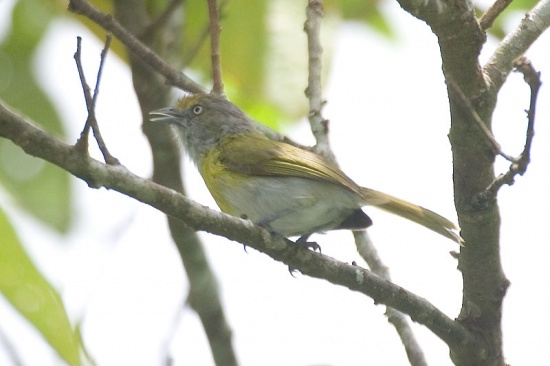
Hylophilus thoracicus
TAXONOMY
Hylophilus thoracicus Temminck, 1822.
OTHER COMMON NAMES
English: Rio de Janeiro greenlet; French: Virйon а plastron;
German: Gelbbrustvireo; Spanish: Vireillo de Pecho Limуn.
PHYSICAL CHARACTERISTICS
About 5 in (13 cm). A slim-bodied bird with a short, pointed
beak. The upperparts are uniformly olive-green, the chest yellow,
the belly and chin light gray, and the iris white.
DISTRIBUTION
Northern South America, southeastern Venezuela and Colombia,
eastern Peru, northern Bolivia, and southeastern and Amazonian
Brazil.
HABITAT
Humid tropical forest and forest edges, as high as about 2,000
ft (600 m).
BEHAVIOR
A nonmigratory species that defends a breeding territory. The
song is a series of rapid, rolling “peeer” phrases.
FEEDING ECOLOGY AND DIET
An extremely active forager for insects and other invertebrates,
gleaned from foliage, flowers, and limbs; also eats small fruits.
Occurs in mixed-species foraging flocks.
REPRODUCTIVE BIOLOGY
Builds a cup-shaped nest that hangs from a forked tree branch.
Both parents incubate the eggs and care for the young.
CONSERVATION STATUS
Not threatened.
SIGNIFICANCE TO HUMANS
None known.
Photo Gallery of - Lemon-chested greenlet
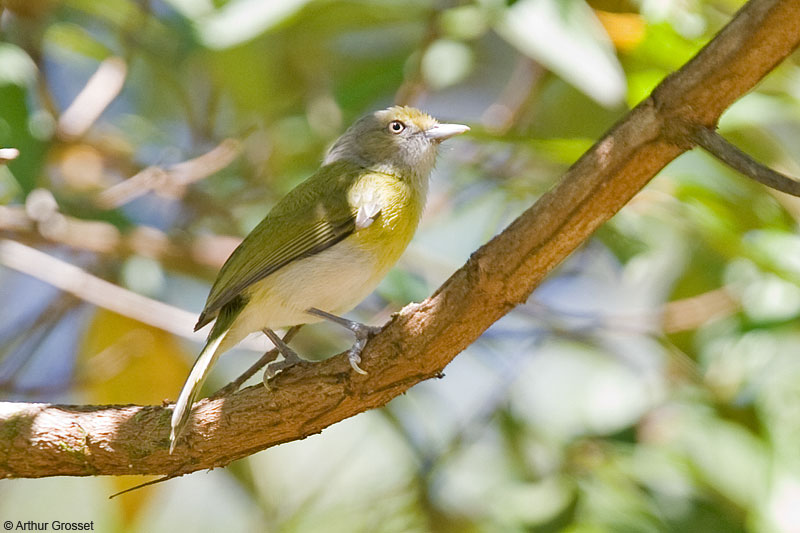
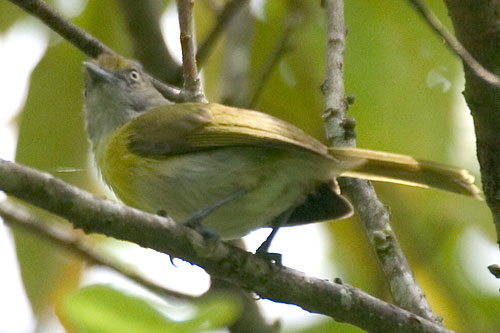
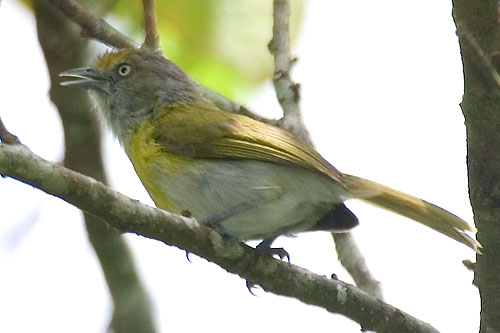
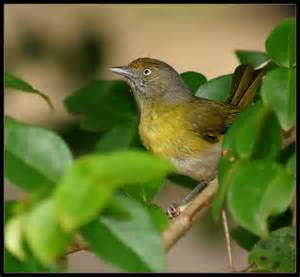
 Animalia Life
Animalia Life